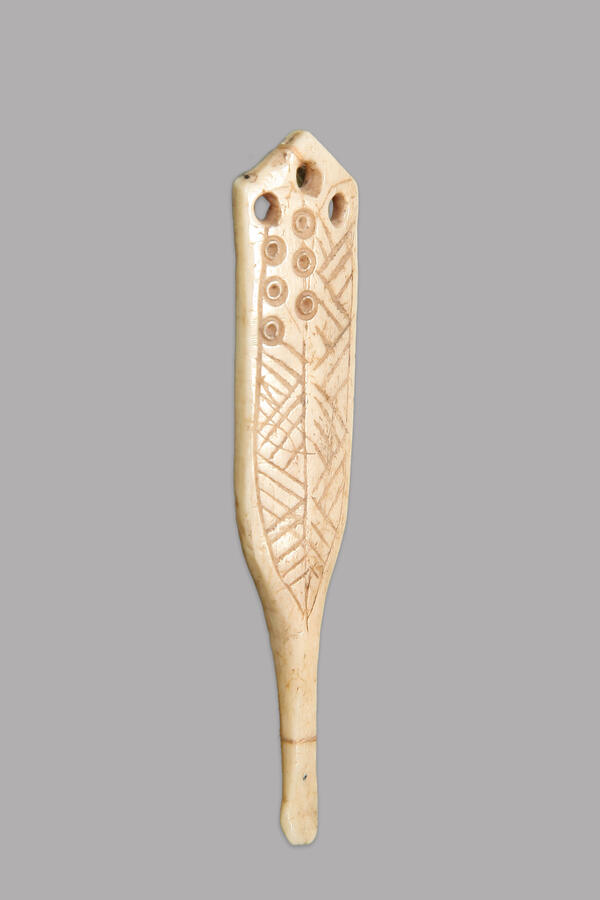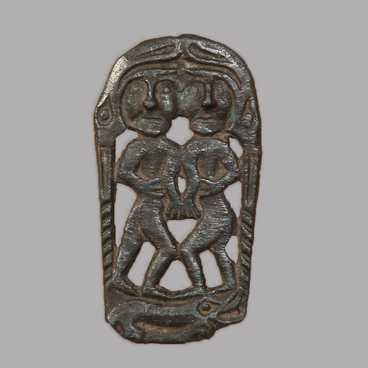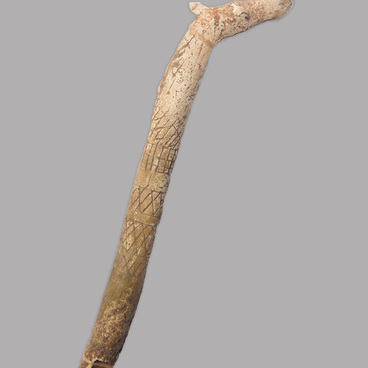The kopoushka (ear spoon) is an ancient personal hygiene tool. It was used to scratch ears, as well as to remove excess earwax. The kopoushka was a popular toilet accessory in Asia and Eastern Europe from the 8th century BC. It is also known by other names: earcleaner, eartwister and, the Japanese version, mimikaki. The ear spoon can still be found today in a manicure kit, and its disposable equivalent is cotton swabs.
A kopoushka consists of three main parts: a functional spatula for ear care, a rod and a decorative element on the other end. The heads of the ear spoons were decorated with miniature figurines of birds, dragons, people, as well as floral and geometric ornaments. Ear spoons often had through holes to wear them as jewelry. Kopoushkas were braided into plaits and suspended from the belt as amulets and talismans, in the belief that their clinking protects against evil spirits.
In different countries, ear spoons were made of wood, glass, bronze, whalebone, ivory and tortoise shell, animal horns and bamboo. Gold and silver pieces were less common. They could be flat and round, tri-, tetra-, penta- and hexahedral, straight and rounded. Due to their great variety, kopoushkas have been attracting collectors’ attention.
The kopoushka from the collection of the Komi-Permyak Local History Museum was found on the western slope of the Kudymkar ancient settlement, a monument of the Rodanovsky culture of the 9th–15th centuries. It was given to the museum in 1931 by I.K. Kudymov, a resident of the village of Kudymkar. The ear spoon is made of bone, on its opposite end there is a wide flat handle with ornamental incisions and orifices. The ancient Komi-Permyaks, who lived along the rivers Inva, Kama and Obva, used kopoushkas from the 9th to the 13th centuries. More than two dozens of such items have been found at the sites of the Rodanovsky culture.
There is one more theory of how kopoushka was used in Ancient Russia. The proverb “Having eaten without salt” (that is “none the wiser”) reminds us of the time when salt was an exotic and expensive product. Perhaps the kopoushka spoon served to measure a tiny portion of salt for oneself.
A kopoushka consists of three main parts: a functional spatula for ear care, a rod and a decorative element on the other end. The heads of the ear spoons were decorated with miniature figurines of birds, dragons, people, as well as floral and geometric ornaments. Ear spoons often had through holes to wear them as jewelry. Kopoushkas were braided into plaits and suspended from the belt as amulets and talismans, in the belief that their clinking protects against evil spirits.
In different countries, ear spoons were made of wood, glass, bronze, whalebone, ivory and tortoise shell, animal horns and bamboo. Gold and silver pieces were less common. They could be flat and round, tri-, tetra-, penta- and hexahedral, straight and rounded. Due to their great variety, kopoushkas have been attracting collectors’ attention.
The kopoushka from the collection of the Komi-Permyak Local History Museum was found on the western slope of the Kudymkar ancient settlement, a monument of the Rodanovsky culture of the 9th–15th centuries. It was given to the museum in 1931 by I.K. Kudymov, a resident of the village of Kudymkar. The ear spoon is made of bone, on its opposite end there is a wide flat handle with ornamental incisions and orifices. The ancient Komi-Permyaks, who lived along the rivers Inva, Kama and Obva, used kopoushkas from the 9th to the 13th centuries. More than two dozens of such items have been found at the sites of the Rodanovsky culture.
There is one more theory of how kopoushka was used in Ancient Russia. The proverb “Having eaten without salt” (that is “none the wiser”) reminds us of the time when salt was an exotic and expensive product. Perhaps the kopoushka spoon served to measure a tiny portion of salt for oneself.





